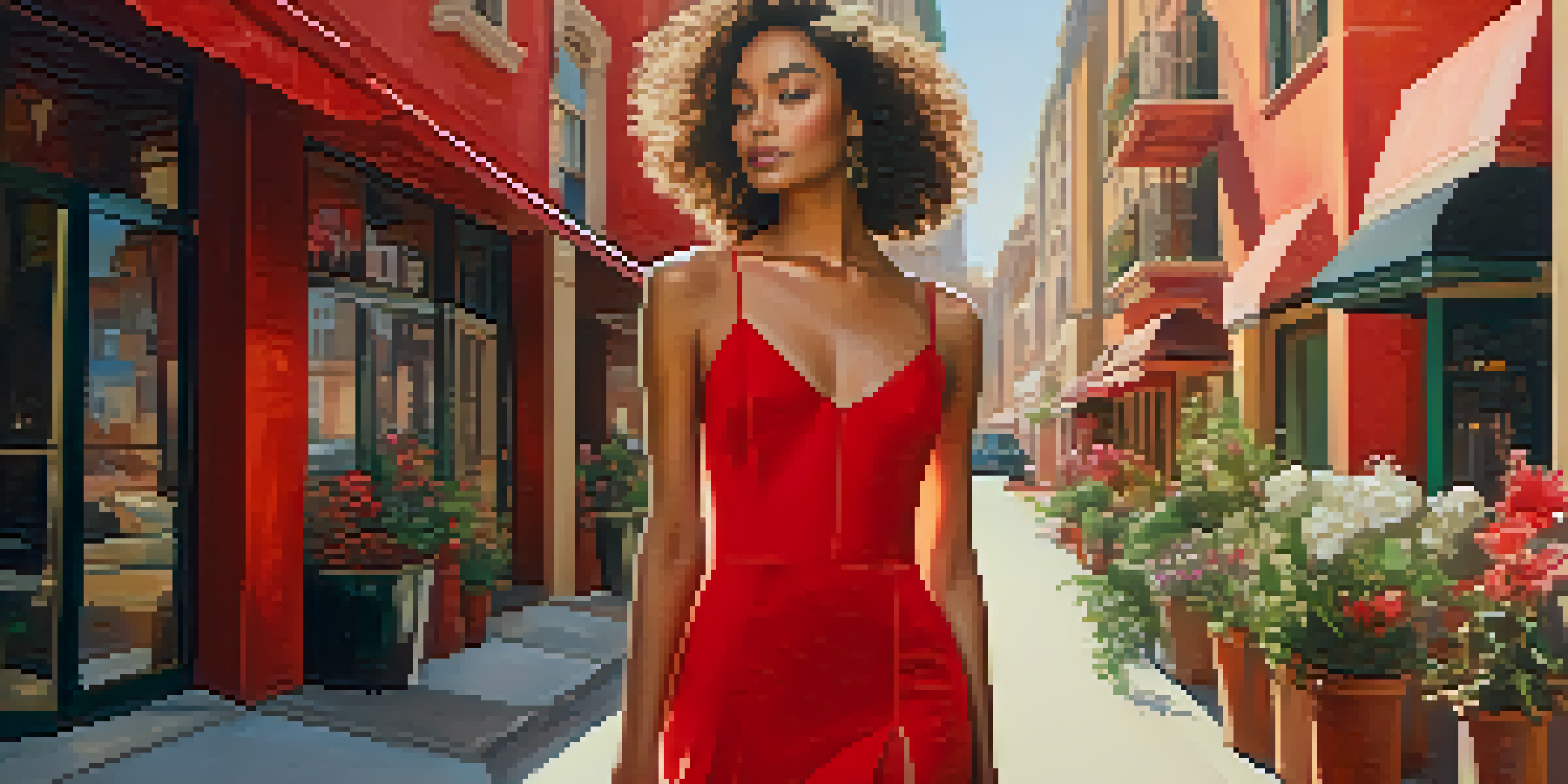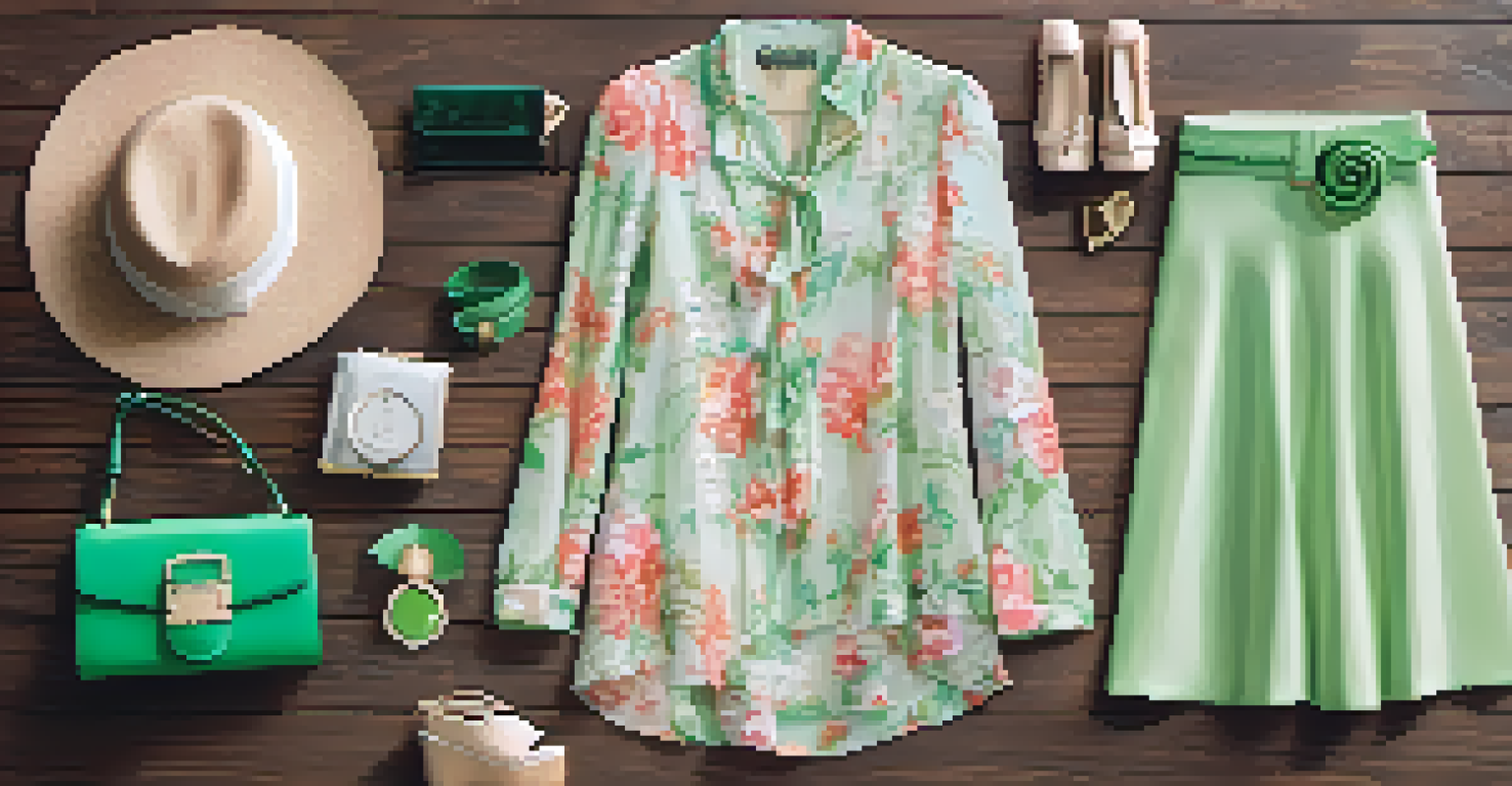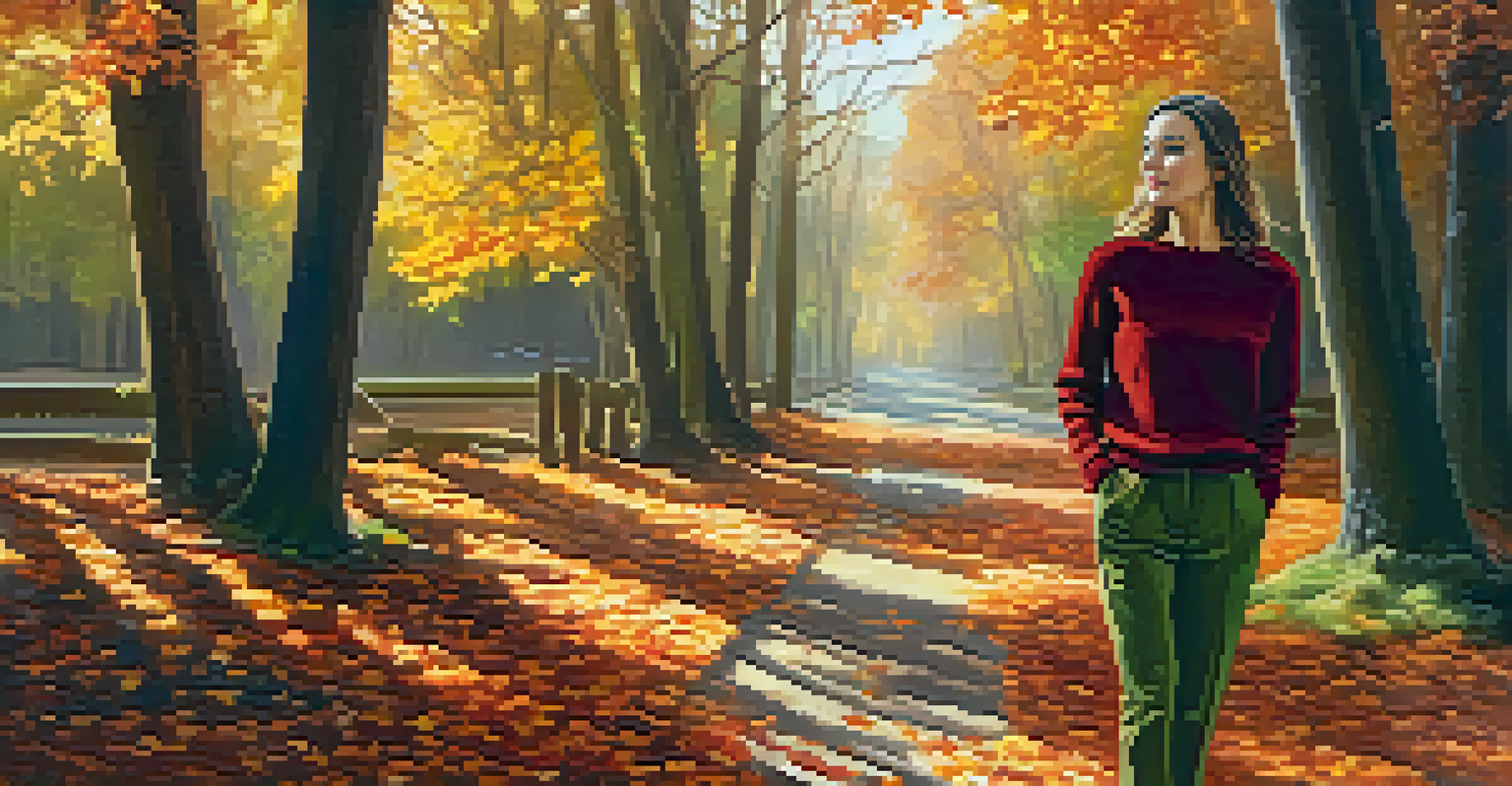The Importance of Color Theory in Personal Style Development

Understanding Color Theory Basics for Personal Style
Color theory is the study of how colors interact and influence perception. At its core, it helps us understand the emotional and psychological impact of color choices. By grasping these basics, you can make informed decisions about your wardrobe that reflect your personality and mood.
Color is the keyboard, the eyes are the harmonies, the soul is the piano with many strings.
For instance, warm colors like red and orange can evoke feelings of energy and excitement, while cool colors like blue and green offer a sense of calm and serenity. This understanding allows you to curate outfits that not only look great but also resonate with how you want to feel on any given day.
Ultimately, applying color theory to your personal style means selecting hues that enhance your confidence and express your individuality. It’s about more than just looking good; it’s about feeling good in your own skin.
The Psychology of Color and Personal Expression
Colors don't just attract attention; they convey messages and emotions. The psychology of color reveals how specific shades can influence mood and behavior, making them powerful tools in personal expression. For example, wearing black can project sophistication, while yellow often signifies happiness and optimism.

When developing your personal style, consider the emotions you want to evoke in yourself and others. This awareness can guide your color choices, helping you to create a wardrobe that truly reflects who you are. Imagine stepping into a room wearing a vibrant red dress; it’s likely to turn heads and spark conversations.
Effects of Color on Emotion
Understanding how colors impact emotions allows you to curate a wardrobe that enhances your confidence and expresses your individuality.
By understanding the psychological effects of colors, you can strategically choose outfits that align with your intentions. Whether you want to inspire confidence in a job interview or exude warmth at a social gathering, the right colors can help you achieve your goals.
Creating Harmony: The Color Wheel and Combinations
The color wheel is a fundamental tool in color theory, showcasing how colors relate to one another. It helps you identify complementary, analogous, and triadic color schemes that can enhance your outfits. By mastering these combinations, you can create visually appealing looks that stand out.
Colors, like features, follow the changes of the emotions.
For instance, pairing a blue top with orange accessories creates a striking contrast, while a green dress with shades of yellow offers a fresh, harmonious vibe. These combinations not only elevate your style but also showcase your creativity. It’s like painting a canvas; each outfit becomes a new masterpiece.
Playing with the color wheel allows you to experiment and find what works best for you. The more you explore, the more confident you’ll become in mixing and matching colors to create unique, personalized outfits.
Seasonal Colors: Adapting Your Wardrobe Throughout the Year
Just as nature changes with the seasons, so too should our color choices in fashion. Each season brings its own palette, and adapting your wardrobe accordingly can enhance your overall style. Think of the warm, earthy tones of autumn or the bright, lively colors of summer.
By aligning your outfits with seasonal colors, you not only stay on-trend but also create a cohesive look that feels timely and appropriate. Imagine wearing rich burgundy in the fall; it feels right, doesn’t it? This simple change can boost your confidence and keep your style fresh.
Using the Color Wheel Effectively
Mastering the color wheel helps you create visually appealing outfits by identifying complementary and harmonious color combinations.
Embracing seasonal colors also allows for a playful approach to fashion. You can experiment with different shades and hues, making each season an opportunity to reinvent your personal style.
Finding Your Personal Color Palette
Not all colors suit everyone, which is why finding your personal color palette is essential. This palette consists of shades that complement your skin tone, hair color, and eye color. By identifying these shades, you can streamline your wardrobe with colors that make you glow.
For example, if you have warm undertones, earthy colors like olive green and burnt orange may look stunning on you. On the other hand, cool undertones might shine in jewel tones like sapphire or emerald. Understanding your palette helps eliminate the guesswork when shopping.
Creating a personalized color palette not only simplifies your choices but also ensures that everything you own works harmoniously together. This strategic approach to color can elevate your style with minimal effort.
The Role of Accessories in Color Coordination
Accessories are the finishing touches that can make or break an outfit. They offer an excellent opportunity to introduce color into your look without overwhelming your overall style. Think of a bright scarf or a bold handbag that can transform a neutral outfit into something eye-catching.
Using accessories allows you to experiment with colors that may be outside your comfort zone. If you typically gravitate toward muted tones, a striking piece of jewelry or a vibrant belt can add a refreshing pop of color. This way, you can express your personal style gradually.
Finding Your Personal Color Palette
Identifying your personal color palette streamlines your wardrobe choices, ensuring that the colors you wear complement your features and make you shine.
Moreover, coordinating your accessories with your outfit's color scheme enhances visual appeal. It creates a balanced look that draws the eye and showcases your attention to detail. Remember, sometimes less is more, and the right accessory can be the perfect cherry on top.
Building Confidence Through Color in Fashion
Color has the incredible power to influence our self-perception and confidence levels. Wearing colors that resonate with you can boost your mood and help you feel more self-assured. Think about the last time you wore something vibrant; didn’t it feel uplifting?
When you embrace colors that reflect your personality, you’re more likely to walk with confidence and own your style. Whether it’s a bold red lipstick or a cheerful yellow dress, these colors can serve as armor, empowering you to face the world with assurance.

Ultimately, developing your personal style through color should be a joyful journey. Celebrate the colors that make you feel alive and confident, and allow them to guide your wardrobe choices. After all, fashion is meant to be fun!